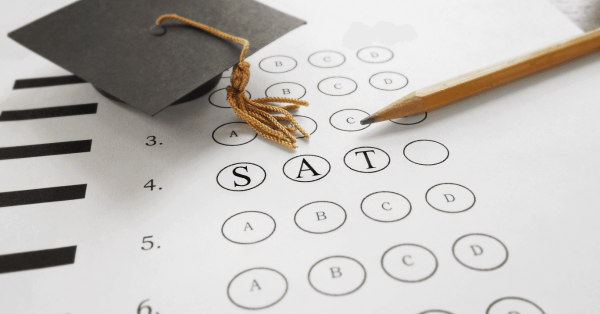Published April 10, 2015

Hearing the word, “SAT” can sometimes strike fear in the hearts and minds of students all over America.
Most of that fear comes from the fact that so much is riding on this exam.
But the other part of the fear is that most students are just underwhelmed with their performance on their first practice test or PSAT.
Although there is no quick fix for getting a perfect SAT score, including SAT tutoring, there are three really easy things you can do to basically guarantee a triple digit improvement.
The SAT used to b infamous for its “guessing penalty.”
For every question you answered correctly you earned one point, for every question you would skip you’d receive zero points and for every question you answer incorrectly you are “penalized” by losing 1/4 of one point. This often leads students to be very confused about knowing when they should guess (and risk getting it wrong and losing a quarter of a point) and when they should skip (and risk losing out on the chance to get it correct and gain a full point). However, there is a simple rule that can cure all the confusion. Whenever a student can, with confidence, eliminate at least ONE answer choice on a question, they should absolutely answer the question – even if they simply guess! The reason is that, statistically speaking, for each answer choice you eliminate you will actually on average gain a full 1/4 of a point. Therefore, there is no need to worry about when to skip and when to guess – you just follow the rule!
Almost 25% of the entire SAT score is based on reading comprehension questions. There are numerous short passages to read and then a number of questions to answer regarding each passage. Many students are advised to read the questions before they read the passage so they will then know what specifically to pay attention to when reading. On the surface, this is a fantastic idea – why should students waste their time trying to understand every little point about a passage if there won’t even be a question on it? However, this method is actually very hurtful. The problem is that most passages have up to 9 very detailed questions and 75 lines of thorough material to read through. This makes it nearly impossible for even the best students to keep all the information straight in their head as they read, often causing confusion and slowing students down. The better idea is to simply read the passage through quickly once and then move on to each individual question. When answering the question, students should refer back to the passage to double check their work. This is much more efficient and accurate.
The essay on the SAT gives students 25 minutes to plan, write and revise a two page essay response to a unique prompt. This section always causes a tremendous amount of stress because 25 minutes is really not enough time for students to create an effective and detailed response of that length. That is why students should create an essay in advance and memorize it. The essay prompts are extremely general and generic – for instance “what motivates people to change” or “is being rich always good.” Because the questions are so broad, students can adapt their essay very quickly. All they have to do is spend the first 10 minutes making notes about how they are going to slightly adjust the outline and details of the essay to match the question, and then they can spend the last 15 minutes simply writing it out. This will help eliminate the time pressure and stress students feel.
Armed with these three simple tools, the SAT can become a lot less scary. Your goal when studying for the exam should be to take back control and make it so you are actively taking the test, and not just passively responding to each new question you come across. Make sure to have a strong game plan ahead of time, and study enough so you can implement it well.
Steve Dorfman is the owner of Tier One Tutors, a Southern California test prep and academic tutoring company. As a UCLA graduate, he relates to the competitive environment students are faced with, and as a father of two, he understands the constant worrying parents have about their kids’ education. To learn more, visit www.TierOneTutors.com or email Dorfman at Steve@TierOneTutors.com

The SAT, or Scholastic Aptitude Test, is a standardized test administered by the College Board. U.S. colleges widely use it...

Table of Contents More than 1.5 million high school students take the Preliminary SAT (PSAT) each year. This guide explains...

This article is sponsored by College Ave Student Loans, dedicated to helping students and families pay for higher education. Teaching...
At Road2College you’ll find everything you need to make the admissions and paying for college process less stressful and more transparent.
Explore R2C Insights™ — your source for finding affordable colleges and merit scholarships.
Get coaching on admissions and college financing.
Join Road2College where parents and experts work together to inform and inspire college-bound families.
By Grade:
By Stage in the Process:
Ad Policy Disclaimer: Product name, logo, brands, and other trademarks featured or referred to within Road2College are the property of their respective trademark holders. Information obtained via Road2College™ is for educational purposes only. Please consult a licensed financial professional before making any financial decisions. This site may be compensated through third party advertisers. This site is not endorsed or affiliated with the U.S. Department of Education. By visiting Road2College’s site, you accept and agree to be bound by Road2College’s Terms of Use.